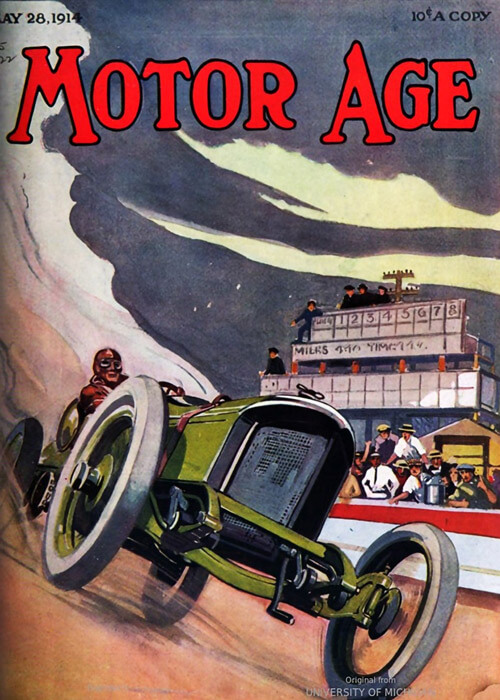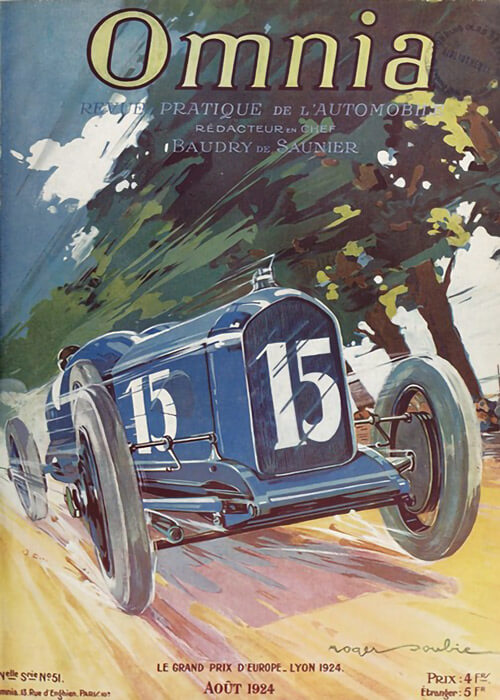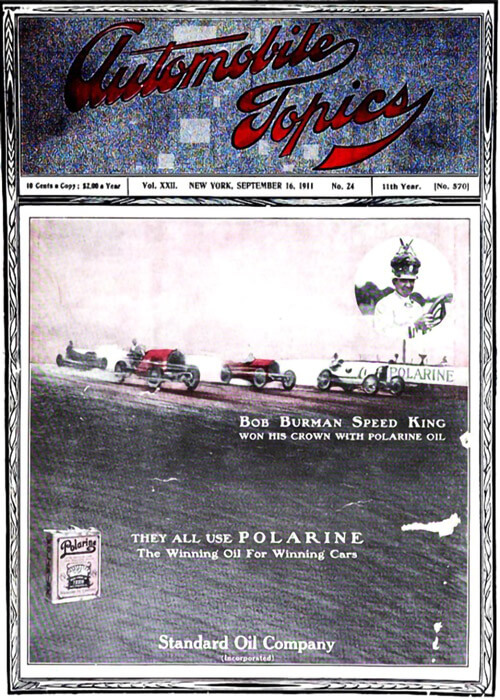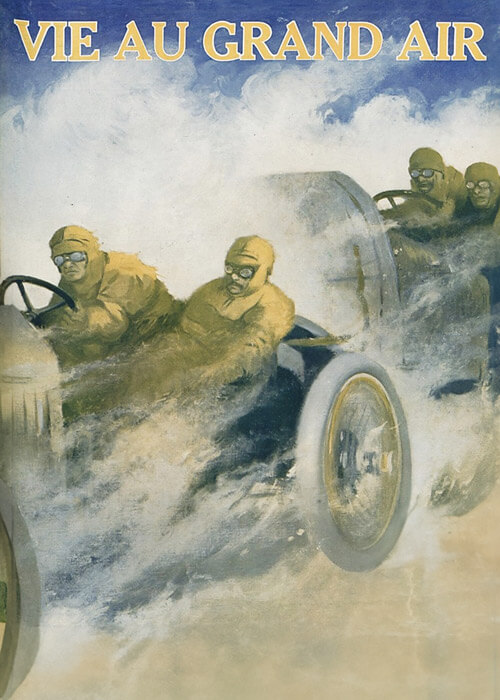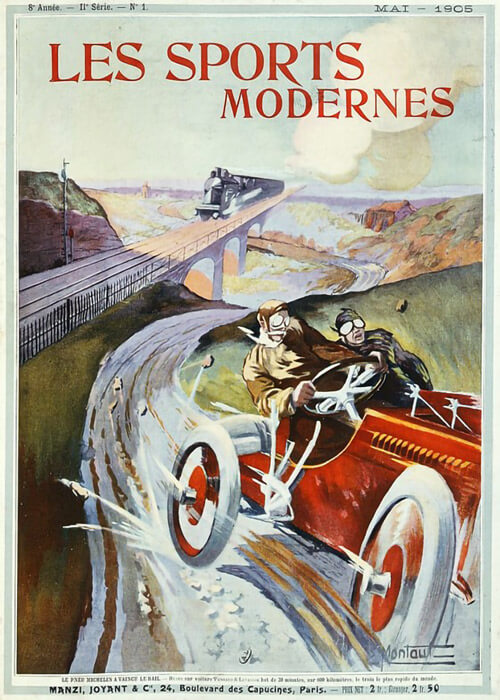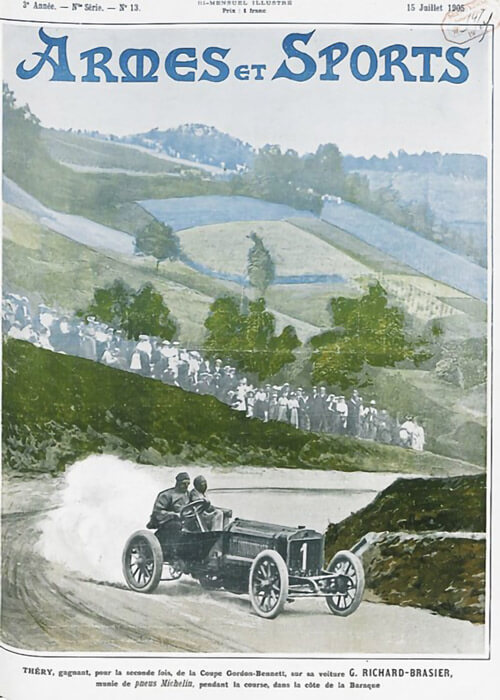
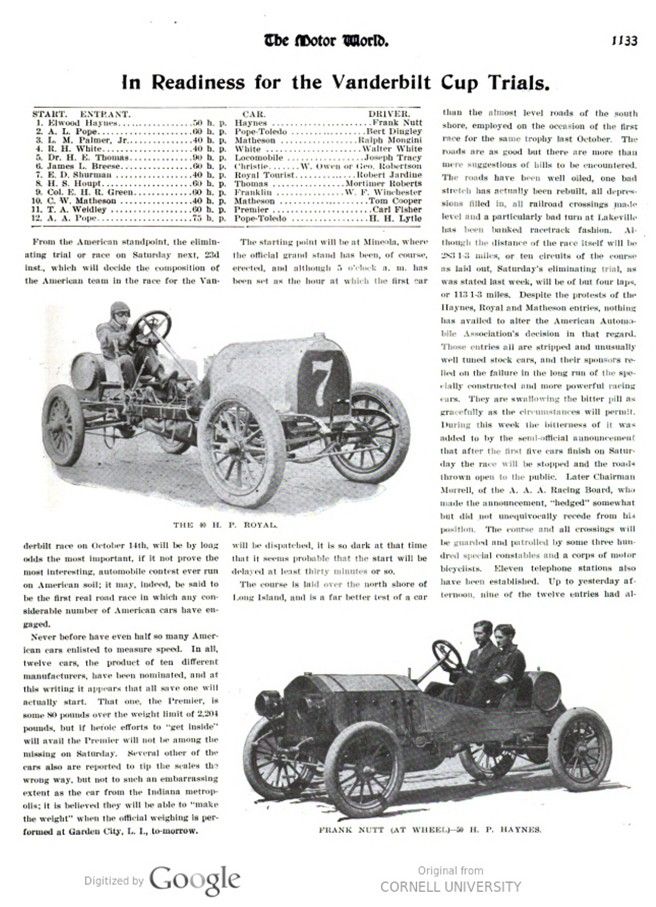

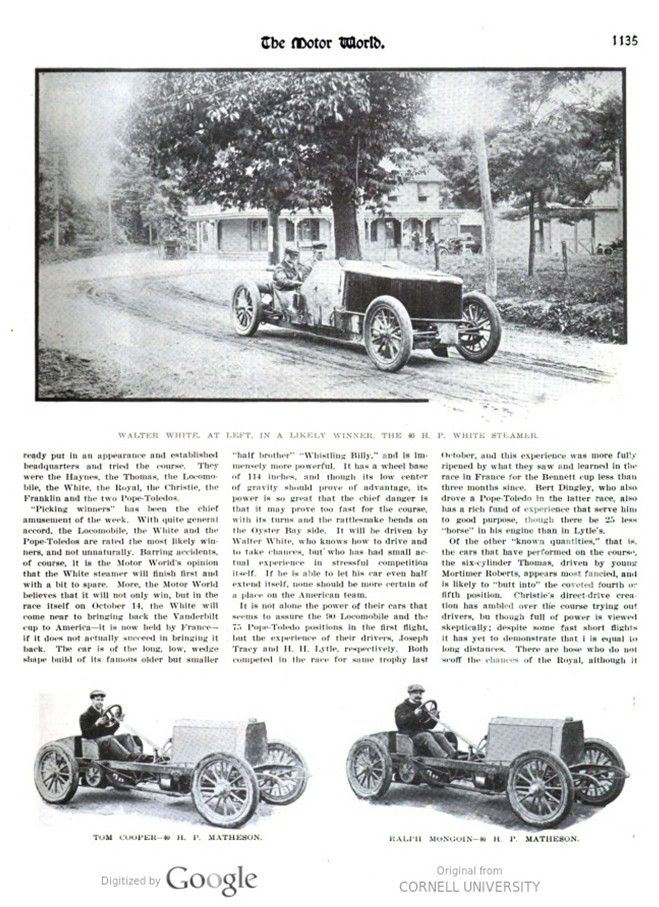
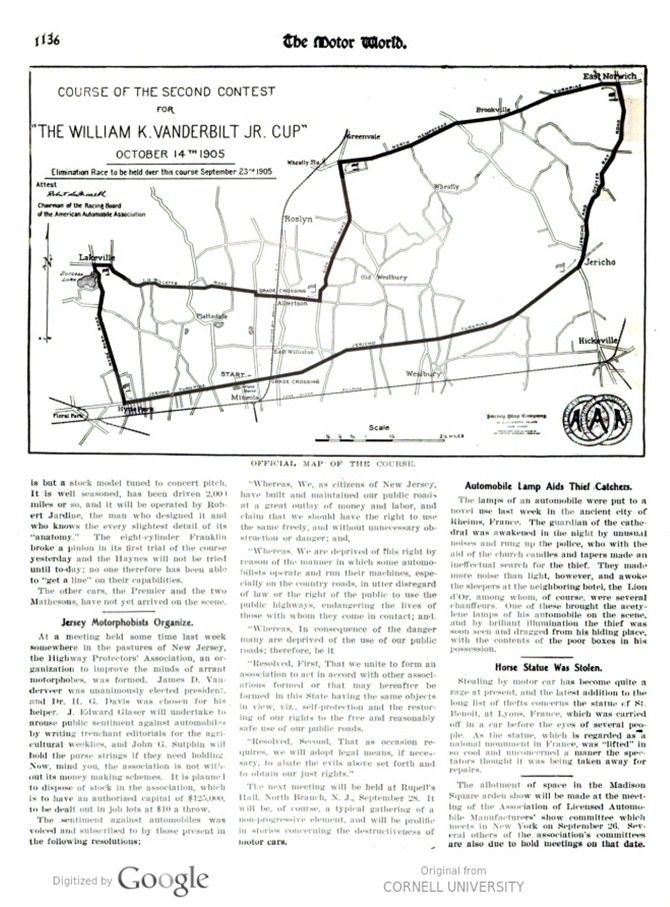
Text and pictures with courtesy of hathitrust.org; compiled by motorracinghistory.com
The Motor World. Vol. X, No. 26, September 21, 1905.
In Readiness for the Vanderbilt Cup Trials.

From the American standpoint, the eliminating trial or race on Saturday next, 23d inst., which will decide the composition of the American team in the race for the Vanderbilt race on October 14th, will be by long odds the most important, if it not prove the most interesting, automobile contest ever run on American soil; it may, indeed, be said to be the first real road race in which any considerable number of American cars have engaged.
Never before have even half so many American cars enlisted to measure speed. In all, twelve cars, the product of ten different manufacturers, have been nominated, and at this writing it appears that all save one will actually start. That one, the Premier, is some 80 pounds over the weight limit of 2,204 pounds, but if heroic efforts to „get inside“ will avail the Premier will not be among the missing on Saturday. Several other of the cars also are reported to tip the scales the wrong way, but not to such an embarrassing extent as the car from the Indiana metropolis; it is believed they will be able to „make the weight“ when the official weighing is per- formed at Garden City, L. I., tomorrow.
The starting point will be at Mineola, where the official grand stand has been, of course, erected, and although 5 o’clock a.m. has been set as the hour at which the first car. will be dispatched, it is so dark at that time that it seems probable that the start will be delayed at least thirty minutes or so.
The course is laid over the north shore of Long Island, and is a far better test of a car than the almost level roads of the south shore, employed on the occasion of the first race for the same trophy last October. The roads are as good but there are more than mere suggestions of hills to be encountered. The roads have been well oiled, one bad stretch has actually been rebuilt, all depressions filled in, all railroad crossings made level and a particularly bad turn at Lakeville has been banked racetrack fashion. Although the distance of the race itself will be 283 1-3 miles, or ten circuits of the course as laid out, Saturday’s eliminating trial, as was stated last week, will be of but four laps, or 113 1-3 miles. Despite the protests of the Haynes, Royal and Matheson entries, nothing has availed to alter the American Automobile Association’s decision in that regard. Those entries all are stripped and unusually well tuned stock cars, and their sponsors relied on the failure in the long run of the specially constructed and more powerful racing cars. They are swallowing the bitter pill as gracefully as the circumstances will permit. During this week the bitterness of it was added to by the semi-official announcement that after the first five cars finish on Saturday the race will be stopped and the roads thrown open to the public. Later Chairman Morrell, of the A. A. A. Racing Board, who made the announcement, „hedged“ somewhat but did not unequivocally recede from his position. The course and all crossings will be guarded and patrolled by some three hundred special constables and a corps of motor bicyclists. Eleven telephone stations also have been established. Up to yesterday afternoon, nine of the twelve entries had already put in an appearance and established headquarters and tried the course. They were the Haynes, the Thomas, the Locomobile, the White, the Royal, the Christie, the Franklin and the two Pope-Toledos.
„Picking winners“ has been the chief amusement of the week. With quite general accord, the Locomobile, the White and the Pope-Toledos are rated the most likely winners, and not unnaturally. Barring accidents, of course, it is the Motor World’s opinion that the White steamer will finish first and with a bit to spare. More, the Motor World believes that it will not only win, but in the race itself on October 14, the White will come near to bringing back the Vanderbilt cup to America – it is now held by France – if it does not actually succeed in bringing it back. The car is of the long, low, wedge shape build of its famous older but smaller „half brother“ „Whistling Billy,“ and is immensely more powerful. It has a wheel base of 114 inches, and though its low center of gravity should prove of advantage, its power is so great that the chief danger is that it may prove too fast for the course, with its turns and the rattlesnake bends on the Oyster Bay side. It will be driven by Walter White, who knows how to drive and to take chances, but who has had small actual experience in stressful competition itself. If he is able to let his car even half extend itself, none should be more certain of a place on the American team.
It is not alone the power of their cars that seems to assure the 90 Locomobile and the 75 Pope-Toledo positions in the first flight, but the experience of their drivers, Joseph Tracy and H. H. Lytle, respectively. Both competed in the race for same trophy last October, and this experience was more fully ripened by what they saw and learned in the race in France for the Bennett cup less than three months since. Bert Dingley, who also drove a Pope-Toledo in the latter race, also has a rich fund of experience that serve him to good purpose, though there be 25 less „horse“ in his engine than in Lytle’s.
Of the other „known quantities,“ that is, the cars that have performed on the course, the six-cylinder Thomas, driven by young Mortimer Roberts, appears most fancied, and is likely to „butt into“ the coveted fourth or fifth position. Christie’s direct-drive creation has ambled over the course trying out drivers, but though full of power is viewed skeptically; despite some fast short flights it has yet to demonstrate that is equal to long distances. There are hose who do not scoff the chances of the Royal, although it is but a stock model tuned to concert pitch. It is well seasoned, has been driven 2,000 miles or so, and it will be operated by Robert Jardine, the man who designed it and who knows the every slightest detail of its „anatomy.“ The eight-cylinder Franklin broke a pinion in its first trial of the course yesterday and the Haynes will not be tried until to-day; no one therefore has been able to „get a line“ on their capabilities.
The other cars, the Premier and the two Mathesons, have not yet arrived on the scene.



Photo captions, pages 1133-1136
Page 1133: THE 60 H. P. P. ROYAL – FRANK NUTT (AT WHEEL) -50 H. P. HAYNES.
Page 1134:
1. UPS AND DOWNS OF THE COURSE; THE JERICHO TURNPIKE.
2. JOSEPH TRACY TRYING THE CORNERS WITH THE BIG LOCOMOBILE.
3. „HAIRPIN“ CORNER, AT LAKEVILLE, ONE OF THE MOST DANGEROUS TURNS, SHOWING THE BANKED ROAD.
Page 1135:
WALTER WHITE, AT LEFT, IN A LIKELY WINNER, THE 40 H. P. WHITE STEAMER.
TOM COOPER-40 H. P. MATHESON. – RALPH MONGOIN-40 H. P. MATHESON.
Page 1136:.
OFFICIAL MAP OF THE COURSE – COURSE OF THE SECOND CONTEST FOR „THE WILLIAM K.VANDERBILT JR. CUP“ OCTOBER 14 TH 1905. Elimination Race to be held over this course September 23rd 1905. Attest: Robert Lushnell, Chairman of the Racing Board of the American Automobile Association
